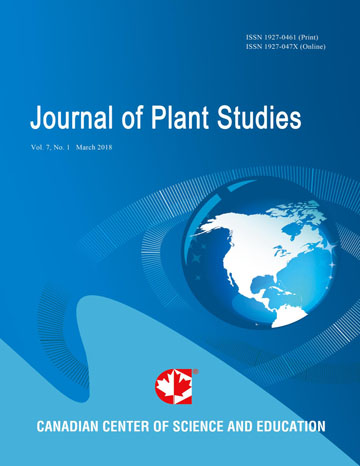A Short Season Canadian Soybean Cultivar Double Cropped After Winter Wheat in Uzbekistan With and Without Inoculation with Bradyrhizobium
- M. Bourgault
- C. A. Madramootoo
- H. A. Webber
- G. Stulina
- M. G. Horst
- D. L. Smith
Abstract
Agricultural systems in Uzbekistan are dominated by the production of cotton and winter wheat as these crops are subject to state-prescribed quotas. An experiment was conducted in the Fergana valley, in Uzbekistan, Central Asia, to determine the feasibility of growing a short-season Canadian soybean (Glycine max [L.] Merr.) cultivar after the harvest of winter wheat in early July. An inoculated treatment was compared to a non-inoculated control in a randomized complete block design with four blocks. While the inoculation did not establish well in 2003, in 2004, the yield of inoculated soybean was twice that of the non-inoculated control (106% increase). Inoculation in 2004 increased seed weights by 30%, final pod number by 29%, biomass dry weight at the pod-filling stage (56%) and at harvest (56%), as well as the harvest index by 22%. Nodules were, in general, only present in the inoculated treatments, which indicated that appropriate indigenous rhizobial strains were not present in these soils, but ineffective rhizobial competitors to commercial inoculants were also absent. Soybean production could be possible in Uzbekistan without competing with state prescribed crops such as cotton and winter wheat. Based on prices from 2004, this represents an additional income of more than 300$ ha-1. More research is needed to determine the optimal conditions for inoculation success in hot and dry climates.
- Full Text:
 PDF
PDF
- DOI:10.5539/jps.v4n2p74
Index
- AGRICOLA
- CAB Abstracts
- CABI
- CAS (American Chemical Society)
- CNKI Scholar
- Elektronische Zeitschriftenbibliothek (EZB)
- Excellence in Research for Australia (ERA)
- Google Scholar
- JournalTOCs
- Mendeley
- Open policy finder
- Scilit
- Standard Periodical Directory
- Technische Informationsbibliothek (TIB)
- WorldCat
Contact
- Joan LeeEditorial Assistant
- jps@ccsenet.org
